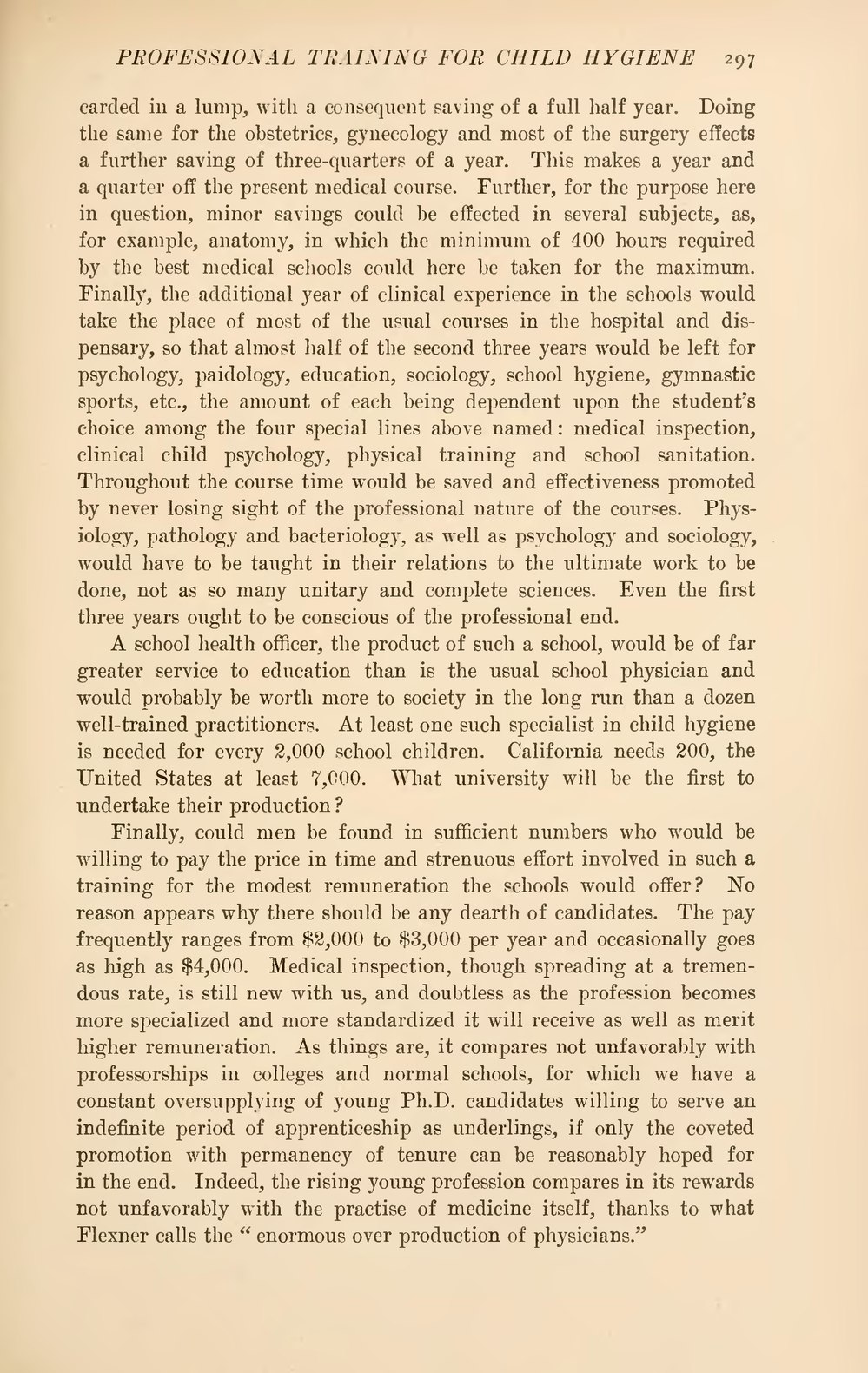carded in a lump, with a consequent saving of a full half year. Doing the same for the obstetrics, gynecology and most of the surgery effects a further saving of three-quarters of a year. This makes a year and a quarter off the present medical course. Further, for the purpose here in question, minor savings could be effected in several subjects, as, for example, anatomy, in which the minimum of 400 hours required by the best medical schools could here be taken for the maximum. Finally, the additional year of clinical experience in the schools would take the place of most of the usual courses in the hospital and dispensary, so that almost half of the second three years would be left for psychology, paidology, education, sociology, school hygiene, gymnastic sports, etc., the amount of each being dependent upon the student's choice among the four special lines above named: medical inspection, clinical child psychology, physical training and school sanitation. Throughout the course time would be saved and effectiveness promoted by never losing sight of the professional nature of the courses. Physiology, pathology and bacteriology, as well as psychology and sociology, would have to be taught in their relations to the ultimate work to be done, not as so many unitary and complete sciences. Even the first three years ought to be conscious of the professional end.
A school health officer, the product of such a school, would be of far greater service to education than is the usual school physician and would probably be worth more to society in the long run than a dozen well-trained practitioners. At least one such specialist in child hygiene is needed for every 2,000 school children. California needs 300, the United States at least 7,000. What university will be the first to undertake their production?
Finally, could men be found in sufficient numbers who would be willing to pay the price in time and strenuous effort involved in such a training for the modest remuneration the schools would offer? No reason appears why there should be any dearth of candidates. The pay frequently ranges from $2,000 to $3,000 per year and occasionally goes as high as $4,000. Medical inspection, though spreading at a tremendous rate, is still new with us, and doubtless as the profession becomes more specialized and more standardized it will receive as well as merit higher remuneration. As things are, it compares not unfavorably with professorships in colleges and normal schools, for which we have a constant oversupplying of young Ph.D. candidates willing to serve an indefinite period of apprenticeship as underlings, if only the coveted promotion with permanency of tenure can be reasonably hoped for in the end. Indeed, the rising young profession compares in its rewards not unfavorably with the practise of medicine itself, thanks to what Flexner calls the "enormous over production of physicians."

